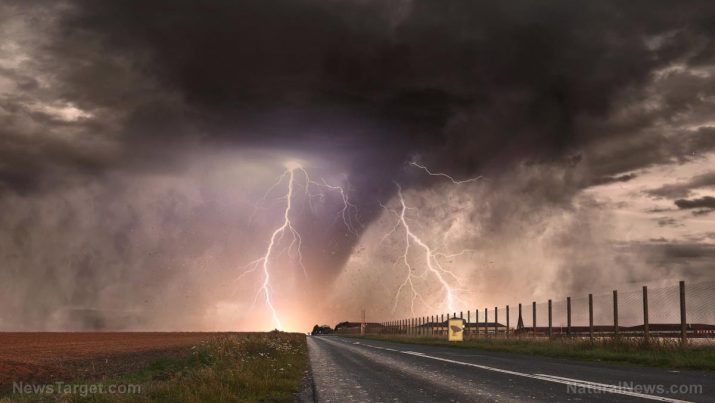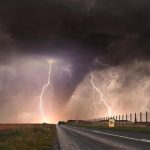
How to read the weather correctly and prepare for it properly
Saturday, June 09, 2018 by Edsel Cook
http://www.preparedness.news/2018-06-09-how-to-read-the-weather-correctly-and-prepare-for-it-properly.html

One of the more useful skills for a prepper is reading the weather. Knowing how to predict the weather will let you prepare accordingly. (h/t to PreppersWill.com.)
The services of a weather forecaster will not always be available. There are areas and times where you have no access to outside communication. The weather can also diverge from the forecast with little warning. Ominous clouds, violent electrical storms, surprise fog banks, and even freak snowfalls in the middle of August could come upon you.
Fortunately, you can predict the weather on your own. Keeping an eye on the sky lets you spot innocuous visual clues that a change is upon you. (Related: How to prepare for a drought.)
Clouds and winds can tell you about incoming weather
The most common and obvious indicator is the clouds. The types of clouds over your head are a good indicator of what the weather will be like.
If you have fluffy, bright white cumulus clouds high in the sky, the weather will be good for the most part. Lower, darker clouds are a warning of a coming shower or storm.
Clouds can also signal the arrival of a warm front or a cold front. A warm front has slender wisps of cirrus clouds at high altitude. A warm front rarely brings bad weather. Still, watch out for nimbostratus clouds, which are grayer and thicker formations found at lower levels. A cold front, however, is much colder and faster. It drops temperatures, causes the wind to shift direction, and lowers the barometric pressure. Cold fronts transform cumulus clouds into tall, dark, and ominous cumulonimbus. These “thunderheads” appear during hot afternoons and bring thunderstorms during the evening.
The color of a cloud can also tell you a lot. White generally means good weather – although it could also herald a front and some rain – while gray is definitely the color of storms. Black clouds indicate stormy weather, but thankfully the winds are weak. Brownish clouds are the worst because strong winds are accompanying the storm.
Winds are another good weather indicator. In the U.S., wind usually comes from the west. If it comes from the east, a storm might be coming. There are many ways to determine the direction of the wind. Toss a handful of sand or grass into the air, wet your finger before sticking it out to learn which side cools first, or set up a small fire. If the smoke goes straight up, the air pressure is high and the weather will be fine. If it dives back into the fire, the pressure is dropping and bad weather is on the way.
Plants and animals behave differently before storms
Taking a deep breath of fresh air will let you pick up the scent of approaching rain. You can also sniff out compost from the plants.
A third good natural indicator are local animals. They are the ones most familiar with local weather. Birds chirp, sing, and fly high during fair weather. Bad weather causes the air pressure to drop. Birds feel sick from this, so they will either fly low or roost in groups. Flying insects also stay closer to the ground right before it rains. Bees and butterflies also hide when a storm is coming, while ants and spiders seem to be excited. Turtles can sense storms days ahead of time. They will head for higher ground, so be warned if you come across one crossing an open street. Cows can also sense bad weather. They will lie down on the field before showers or storms to protect themselves.
Pick up more tips about essential survival skills at Preparedness.news.
Sources include:
Tagged Under: Tags: preparedness, Preppers, prepping, survival, survival skills, survivalist, tips, weather forecast, weather indicators, weather prediction, wilderness survival





